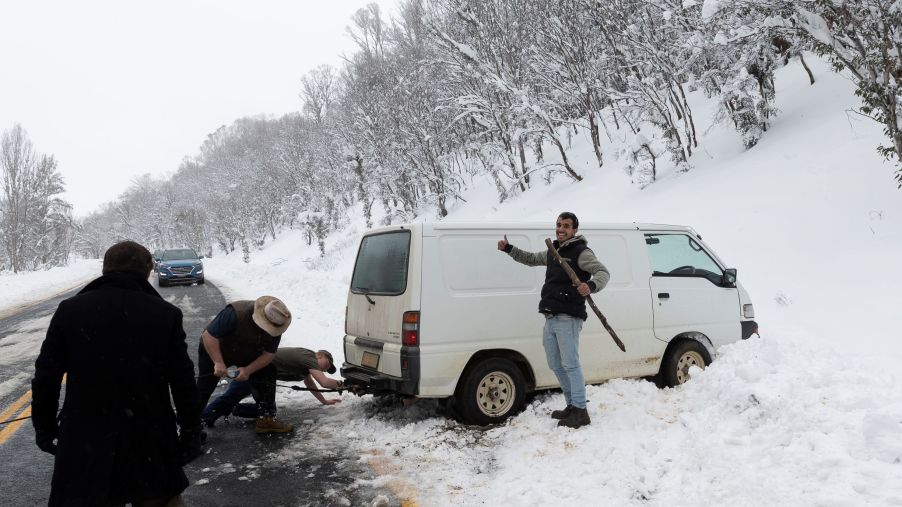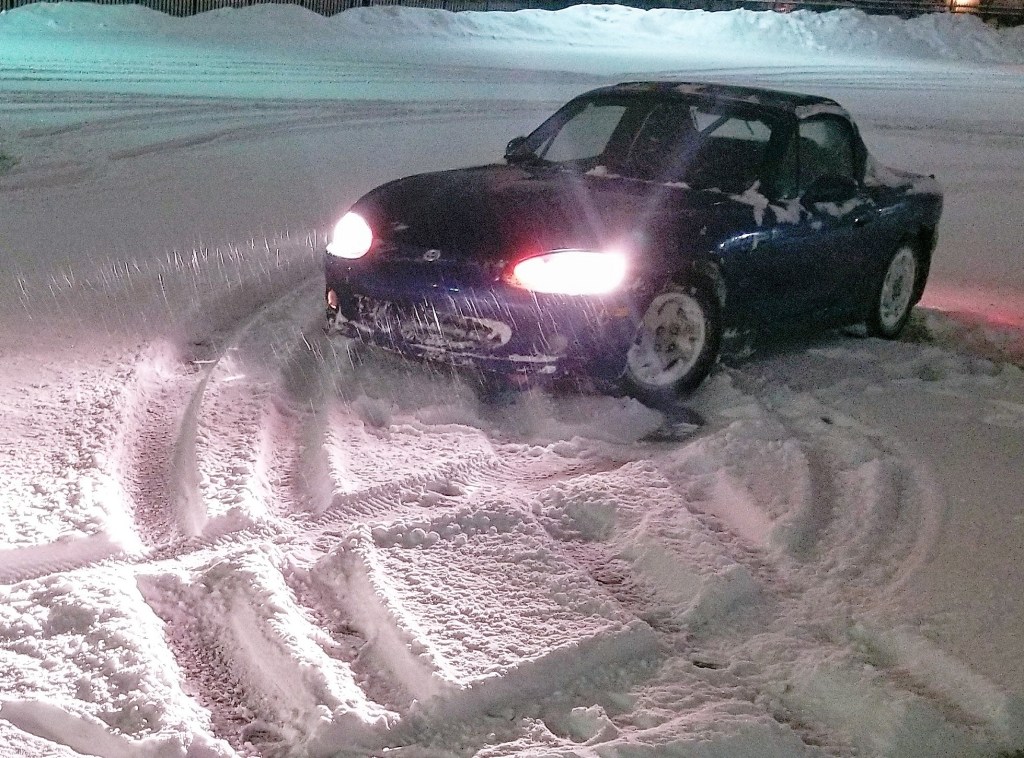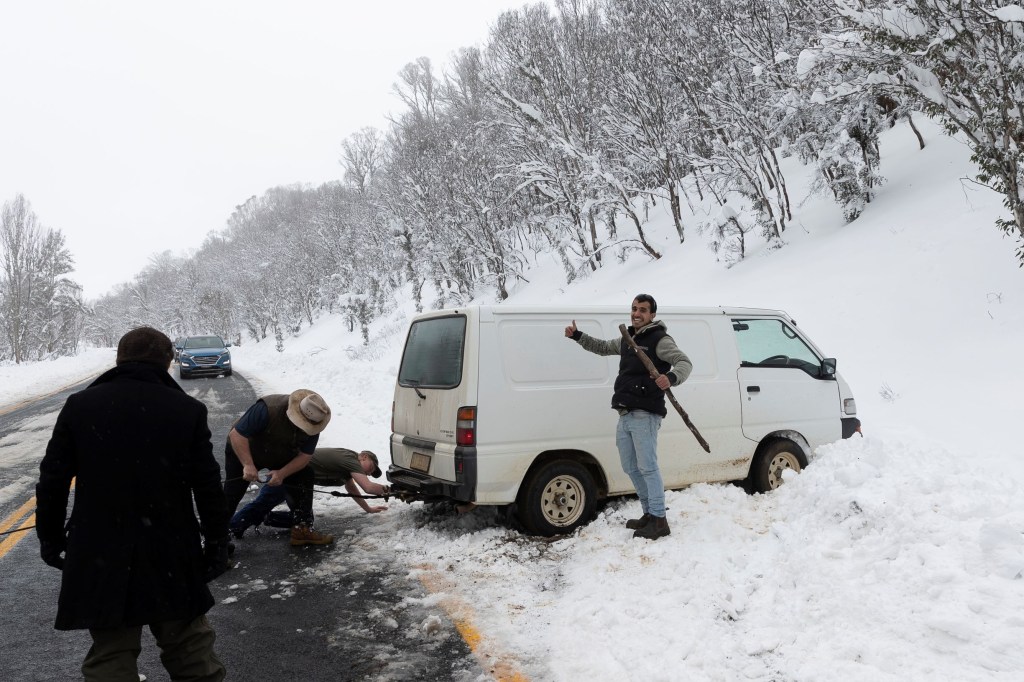
What Should You Do if Your Car Starts Spinning on Snow or Ice?
As winter approaches, more and more cars are going to start encountering snow- and ice-covered roads. Some drivers may think that having an all-wheel-drive vehicle makes them immune to winter driving hazards. Inevitably, though, someone who hasn’t done the necessary prep-work will find their car spinning out in a spray of snow. As nerve-wracking as that situation can be, it’s something you can safely handle. Here’s how.
Why do cars start spinning on snow and ice?

Whether your car starts spinning in the rain, snow, ice, or all three, the key ingredient is traction. Or rather, lack of it, Cars.com explains.
Through friction, a car’s tires grip the road, which is what makes it go, stop, and corner. Snow prevents the tires from hitting the road and doesn’t create as much friction. Thus, your car’s wheels, and eventually the whole car, starts spinning.
Ice is much slipperier than pavement, so there’s less friction and thus less grip. Plus, when a car drives on snow or ice, it creates a thin melted layer of water, decreasing grip further, Outside explains.
Can you prevent this?
If you’re really serious about preventing your car from spinning in the winter, you need to get snow tires, aka winter tires. Specifically, a full set of them. Installing just two may actually cause your car to start spinning more easily, Road & Track explains.
All-season tires aren’t really for all seasons, The Drive explains, because they get hard and less grippy as temperatures drop. Winter tires, though, stay flexible even in below-freezing conditions. Plus, they have unique tread designs meant to quickly fling snow and water away from the contact patch, Car and Driver explains. And if your local laws allow it, a set of snow cables or tire chains further improves winter driving grip.
Speaking of grip, while AWD helps, it’s not a replacement for good winter tires, The Drive and Car and Driver report. Both AWD and 4WD boost traction, but they can’t boost what isn’t there, much like 1 x 0 and 5 x 0 both equal 0. AWD lets a car move forward more effectively, and prevents some spinning during acceleration, but it doesn’t help it stop, Edmunds explains. And while it helps with cornering somewhat, on a sufficiently snowy or icy road, the effect is minimal at best.
Besides tires and chains, preventing your car from spinning depends on your driving technique, Car and Driver explains. All of your inputs—steering, accelerating, braking—need to be smooth and gradual. As we mentioned earlier, the key is traction. That means not doing something that could cause your car to break traction, such as accelerating mid-turn, The Drive explains. Ditto braking in the middle of a turn—even with ABS, that still causes weight transfer, which affects traction.
What should you do if your car starts spinning?
Even if you do follow these tips, it’s possible that your car will start spinning anyway. But there’s no need to panic—you can get out of it safely.
First, smoothly let off the gas, but don’t hit the brakes, Autoblog explains. If you have to brake, do it smoothly and gently, Car and Driver explains, or you’ll make the skid worse. What you do next depends on what kind of skid your car is in.
For a front-wheel skid, just let off the gas and steer in the direction you want your car to go. If your car started spinning because of a rear-wheel skid, turn the wheel in the direction the rear wheels are going. And if you’re still sliding or spinning, and your car has ABS, press down firmly on the brake pedal, and keep steering.
Additionally, don’t look at whatever you’re trying to avoid, The Drive reports. If you do, you’ll end up hitting it.
Other helpful winter and snow driving tips

Even after all this, you may end up spinning your car into a snowbank. Or you may try to exit your parking spot only to find your wheels spinning uselessly in the snow. Luckily, there are ways to get unstuck, The Drive reports.
First, dig out as much snow from under and around your tires as possible. Next, try to ‘rock’ the car by reversing and driving forward repeatedly. If that still doesn’t work, you can use special traction mats—similar to the ones off-roaders use—to help your car clear the snow, The Drive reports. And if that doesn’t work, ask someone to help you push, or call a tow truck.
Avoiding a spinout doesn’t require only traction and reflexes, though. Winter driving also demands good visibility. That’s why, in addition to making sure your tires are properly inflated, check on your windshield wipers and wiper fluid. And keep an ice scraper in your car, as well as extra wiper fluid and, if possible, a shovel.
Follow more updates from MotorBiscuit on our Facebook page.


